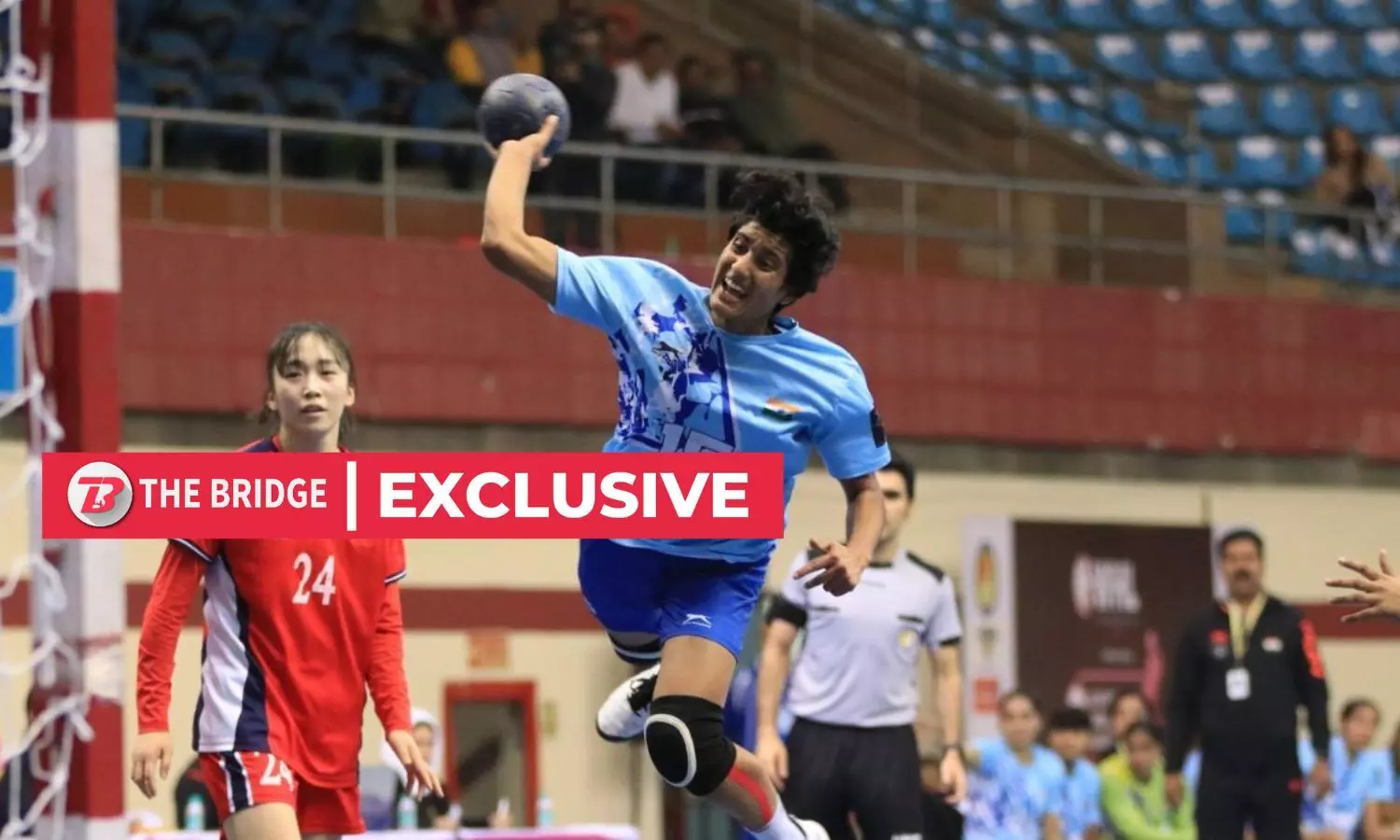Handball
Women's handball in India: A silent revolution gaining momentum
Women's handball in India is taking baby steps towards a larger goal.

Bhawana in action at the Asian Handball C'ships
Manika Pal and Bhawana hail from remote villages in Himachal Pradesh. But, there's more in common than just that between the two.
Both of them picked up handball in school over a decade ago. They have since grown with the sport and are now a regular feature in the Indian women's handball team.
Both Pal and Bhawana have a similar story to tell.
Breaking stereotypes
"When I first started playing in my village, people used to tell my parents, ‘Why are you letting a girl play?'" Pal, the more expressive of the two opens up in a conversation with The Bridge.
The notion that girls have no future in sports and that Pal would run away with some boy was a common taunt her parents had to endure.
But then came around Sachin Chaudhary and Snehlata Chaudhary – former India handball players – who have churned out international players after international players in the sport from Morsinghi.
Like a lot of other girls in the region, the husband-wife duo took Pal and Bhawana under their wings and moved them to Morsinghi, now popularly known worldwide as India's handball cradle.
Over the years, the Chaudhary's have housed countless girls in their academy, who have gone on to represent India. Pal and Bhawana are two among them.
“Initially, no one in my village sent their daughters to play," said Bhawana. "But once Snehlata ma’am took us under her wing, everything changed."
Both Bhawna and Pal were a part of the Indian team, which finished sixth at the recently conducted Asian Women's Handball League.
“When we saw the success of the men’s league, we kept wondering when a women’s league would happen,” recalled Manika. "Now that this step has been taken, we want to give our best and prove ourselves.
"Even the government only starts supporting once medals come in. So our focus now is the Asian Games and beyond," she added.
Existing challenges
While the situation for players in handball has improved a bit in recent times, there's still a long road ahead for handball to become a well-recognized sport in the mainstream.
"The biggest issue is awareness," said Swapnil, MD of Pavna Group who hosted the Asian Women's Handball League in association with the federation. "Even today, people confuse handball with volleyball or softball."
Stakeholders of the league believe like how the Pro Kabaddi League turned the face of kabaddi in the country, a well-structured league can help push handball to greater heights.
“Look at kabaddi. It had no recognition a decade ago. Today, it’s one of India’s most-watched sports. Handball has that potential. We just need to give it time and the right ecosystem.”
Another major challenge is the lack of infrastructure.
"Handball in India is usually played outdoors, so when we compete internationally we have to go from practicing outdoors to playing indoors," said Pal, recounting the difficulties she and the national team players faced due to lack of proper infrastructure in the country.
As a step in the right direction, Indian players are now being sent to other countries to get exposed to better facilities and to gain experience by playing with and against the best in the world.
Added to that, an indoor training complex with all amenities has also been constructed in India to bridge the infrastructural gap.
“We are creating an environment where players from across the country get access to world-class training, infrastructure, and international exposure,” Swapnil said.
India's progress in the sport is evident, and when the 20th Asian Women's Handball Championship took place in India for the first ever time, it was a sign that Handball has much to offer for the country.
Although still in its infancy, Handball has offered a lifeline to many aspiring girls in the country, as a means to break societal constraints and follow their passion.
While the Olympic goal might be in the distant future, with every step, the destination gets closer.

